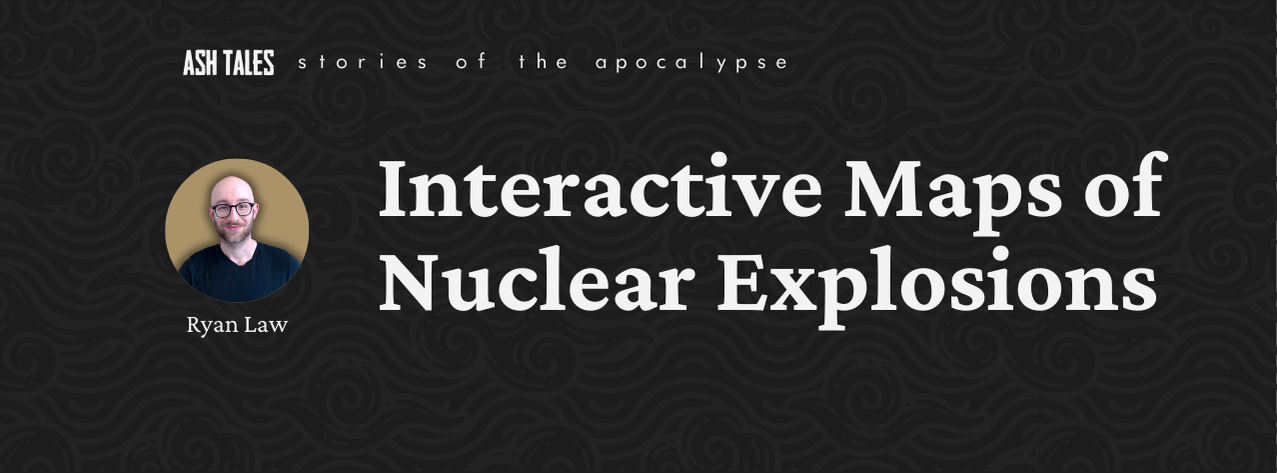Interactive Maps of Nuclear Explosions
The history of nuclear explosions is one of power, destruction, and intense global consequences. While the detonation of a nuclear device typically brings to mind images of the catastrophic bombings of Hiroshima and Nagasaki, the reality is that nuclear explosions have occurred far more frequently, with various purposes and consequences. These detonations, recorded and documented up until 2020, offer a grim reflection on humanity’s use of nuclear energy—whether for warfare, testing, or scientific exploration.
The data set from Virginia Tech's CORGIS collection documents all known nuclear explosions before 2020, providing valuable insights into their geographic locations, magnitudes, and purposes. This data not only includes the well-known military deployments but also the countless tests and, in rare instances, accidents that have occurred throughout the nuclear age.
Map of all detonations
Here’s what it looks like if we plot every documented detonation on a world map. Click each icon for more information about the type of explosion, the yield of the bomb used, and the country responsible:
Heatmap of nuclear detonations
A heatmap of the explosions paints a clear picture: the vast majority of nuclear detonations have happened in or around two nations, the United States and (what was then called) the USSR:
Nuclear explosions by country
The United States leads the world with 1,031 nuclear detonations, spanning from 1945 to 1992. These tests, including the first-ever Trinity test and the infamous bombings of Hiroshima and Nagasaki, were key to the U.S.'s Cold War nuclear strategy. The U.S. focused heavily on testing to refine its arsenal, with detonations conducted in Nevada and the Pacific.
The Soviet Union ranks second with 714 explosions. Their nuclear program began in 1949 with the RDS-1 test, sparking the nuclear arms race. The USSR conducted major tests in Kazakhstan and Novaya Zemlya, including the largest detonation ever recorded, the Tsar Bomba, in 1961.
France, with 208 tests, primarily conducted in Algeria and the Pacific, developed its nuclear arsenal to maintain independence from NATO and other global powers.
Newer nuclear powers like China (43 tests), India (3 tests), Pakistan (2 tests) have conducted significantly fewer detonations. This reflects tighter international regulations and pressure, especially after the Cold War. Treaties like the Comprehensive Nuclear-Test-Ban Treaty (CTBT) have been instrumental in reducing nuclear testing worldwide.
Nuclear explosions by year
Nuclear explosions peaked in 1962, with an incredible 177 documented detonations in that year alone. This surge reflected the height of Cold War tensions, with the United States and the Soviet Union locked in a race to expand their nuclear arsenals. The early 1960s saw these superpowers testing various nuclear devices at an unprecedented rate, from air-dropped bombs to underground detonations, in an attempt to outmatch each other and showcase their technological prowess.
The Cuban Missile Crisis in 1962, one of the most dangerous moments of the Cold War, exemplified the fear and urgency surrounding nuclear warfare at the time. While direct conflict was narrowly avoided, the escalating number of tests indicated both nations’ drive to bolster their nuclear deterrents, as part of the broader strategy of Mutual Assured Destruction (MAD).
However, the rapid increase in nuclear tests began to raise global concerns. The environmental and health impacts of radioactive fallout became more apparent, prompting the international community to take action. In 1963, the Partial Test Ban Treaty (PTBT) was signed by the United States, Soviet Union, and the United Kingdom, banning nuclear tests in the atmosphere, underwater, and outer space. This treaty marked a turning point, leading to a significant decline in testing as countries shifted to underground detonations, which were both less frequent and less visible.
Throughout the late 20th century, nuclear tests continued, but at a slower pace. Additional arms control agreements, like the Strategic Arms Limitation Talks (SALT) and Intermediate-Range Nuclear Forces Treaty (INF Treaty), helped curb the development and testing of new nuclear weapons.
By the 1990s, the number of nuclear detonations had dropped to near-record lows. The Comprehensive Nuclear-Test-Ban Treaty (CTBT), adopted by the United Nations in 1996, further accelerated the decline. This treaty prohibited all nuclear explosions, though some key nations, including the U.S., China, and India, have not yet ratified it. Despite this, global testing slowed dramatically as the Cold War ended and the focus shifted to non-proliferation and diplomacy.
Nuclear explosions by weapon type
The most common detonation types are "Shaft" and "Tunnel," underground nuclear tests that involve detonating a nuclear device within a well or tunnel, and are designed to contain the explosion's full force underground. The high frequency of these methods aligns with the global shift towards underground testing, particularly after the adoption of the Partial Test Ban Treaty in 1963, which banned nuclear tests in the atmosphere, underwater, and in space. Underground tests are generally considered safer in terms of limiting radioactive fallout and are less observable, reducing international tensions.
In contrast, methods like "Airdrop" and "Tower" are also notable but less frequent. "Airdrop," involving detonation following an aerial drop, and "Tower," where devices are detonated atop large structures, were more common during the early years of nuclear testing. These methods were prominent in the atmospheric tests of the 1950s and early 1960s, such as those conducted at Bikini Atoll and Nevada Test Site. The iconic images from these tests, showcasing massive mushroom clouds, have become synonymous with nuclear explosions.
The variety in deployment types also reflects technological advancements and strategic shifts over the decades. While "Surface" and "Balloon" methods were used in the past, their relatively lower occurrence in the data may point to their limited use due to operational constraints or treaty limitations. This chart not only illustrates the history of nuclear testing practices but also underscores the evolution of global nuclear policy and its impact on how and where nuclear tests have been conducted.


